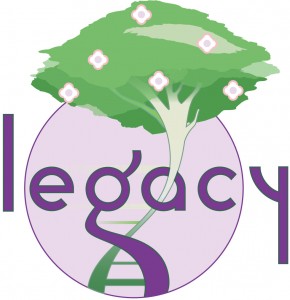LEGACY Girls Study
LEGACY: Lessons in Epidemiology and Genetics of Adult Cancer from Youth
The identification of risk factors for breast cancer has tremendous clinical importance. One of the strongest risk factors is a breast cancer family history. Studies attempting to identify breast cancer risk factors have focused mainly on genetics and hormonal and lifestyle factors in adult women. However, there is growing evidence that young girls may be particularly sensitive to exposures (e.g., ionizing radiation exposure, childhood and adolescent growth, body composition, and physical activity) that are associated with either initiation of or protection against breast cancer. It has not been studied whether the effects of early-life exposures on breast cancer are greater in individuals with a breast cancer family history than in those at average risk. Studies on individuals with a family history of cancer have been of great value in the identification of genetic alterations that play a role in cancer development, not only in the familial setting, but more generally in sporadic cancer as well (e.g., p53 mutations). Similarly, familial clustering is also likely to be associated with clustering of risk factors influenced by both genes and environment, as well as clustering of health-related behaviors, and may therefore be a powerful setting in which to identify factors important in both familial and sporadic breast cancer.
The LEGACY Girls Study examines early-life exposures and endpoints related to pubertal and adolescent development, including breast tissue characteristics, in a unique cohort of young girls from families with breast caner who therefore are at increased risk of developing breast cancer. We have established a cohort of 450 girls aged 6-13 years who are the offspring of women enrolled in the Breast Cancer Family Registry (BCFR), and for direct comparison, 450 girls from families without breast cancer. The youth cohort, named LEGACY (Lessons in Epidemiology and Genetics of Adult Cancer from Youth), will be followed prospectively, with repeated data and biospecimen collection at 6-month intervals, to study epidemiologic and epigenetic pathways of childhood exposures in relation to pubertal development, age at menarche, breast tissue characteristics, selected biomarkers, genomic DNA methylation, and the psychosocial impact of increased breast cancer susceptibility, thus providing a rich resource for epidemiologic, molecular and biomarker studies in young girls. Unlike any other youth cohort, the LEGACY cohort is unique in that it will be enriched with girls at increased breast cancer risk, given their family history, and covering a wide spectrum of risk. It is currently not known how young girls at increased risk of adult-onset breast cancer can lower their risk, nor is it known how young girls with a breast cancer family history adapt to familial risk and how such familial risk impacts their behaviors throughout pubertal development. Understanding these relations is necessary for the successful translation of early-life exposure information into health-promoting and breast cancer prevention behaviors during childhood and adolescence. Specifically, we aim to:
Aim1: Recruit 900 girls ages 6-13 years and through semi-annual follow-up retain them in LEGACY, a unique youth cohort, that is enriched with girls at increased breast cancer risk.
Aim2: Assess the association of pubertal development (onset and tempo of breast development), age at menarche, and breast tissue characteristics over time with prospectively collected childhood measures of body size, growth, lifestyle factors (physical activity, diet, vitamin D), built environment, and selected biomarkers of exposure (leptin, insulin, 25-OHD), and to assess whether these associations are modified by breast cancer family history.
Aim3: Assess the association of genomic DNA methylation, and changes in genomic DNA methylation patterns over time, with childhood exposures described in Aim 2 above, and assess whether genomic DNA methylation over time is modified by breast cancer family history.
Aim4: Assess how psychosocial adjustment and behaviors of girls from families with breast cancer differ from those of girls without a breast cancer family history; identify mother and daughter biopsychosocial factors that may mediate adjustment and behaviors; and describe how these relations change throughout pubertal and adolescent development.
The LEGACY Girls study with prospective follow-up will provide novel information that is crucial to understanding when breast cancer susceptibility begins, whether it is influenced by modifiable determinants in early life, and how breast cancer family history affects psychosocial adjustment and behaviors throughout childhood and adolescence.


